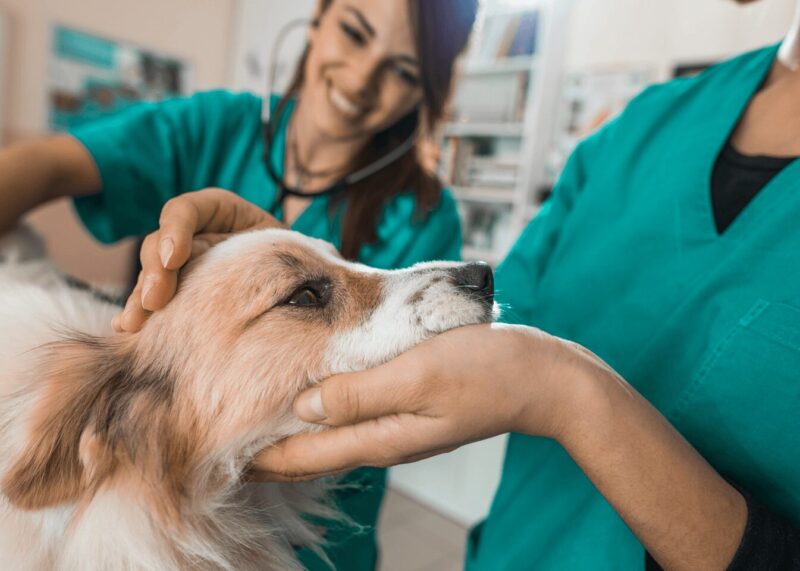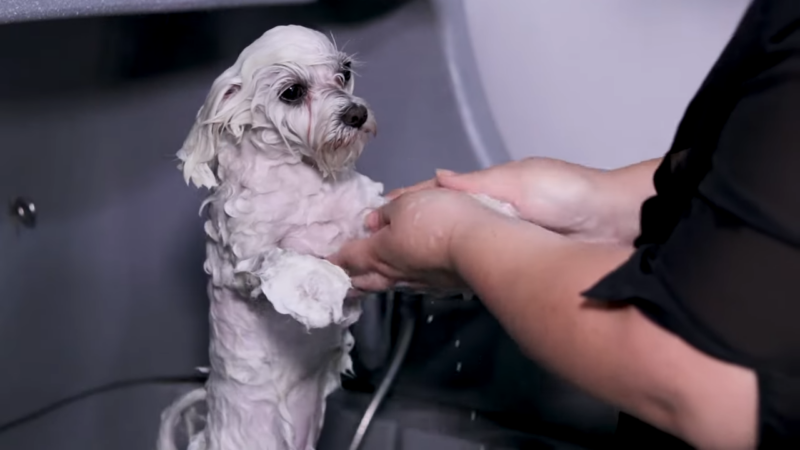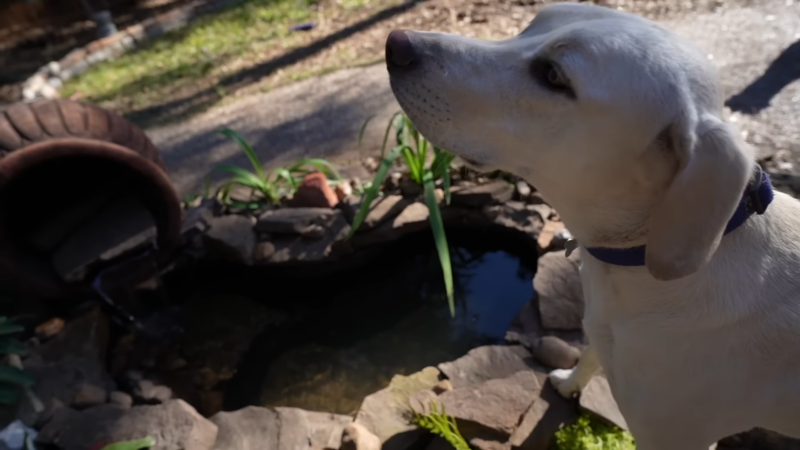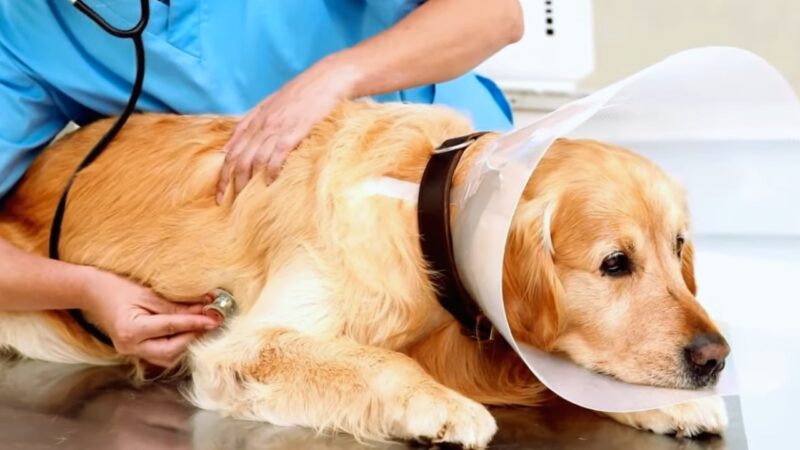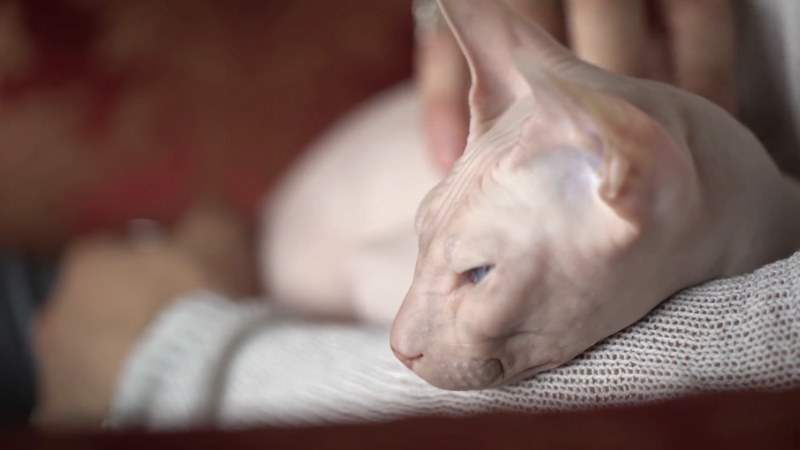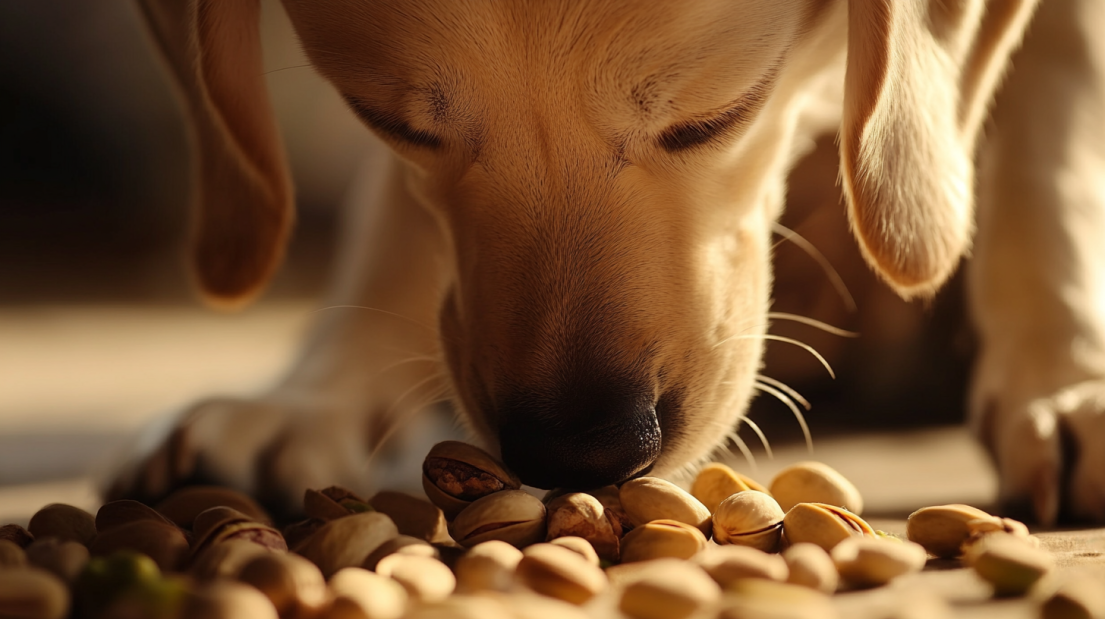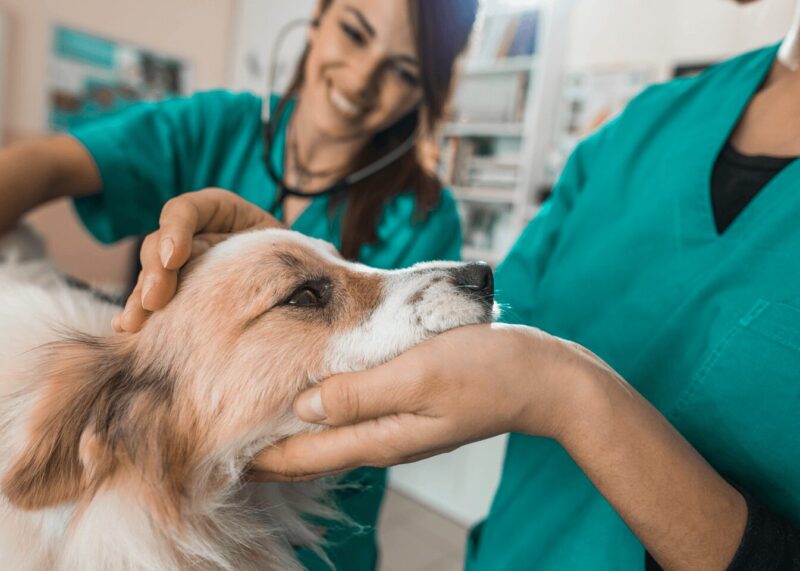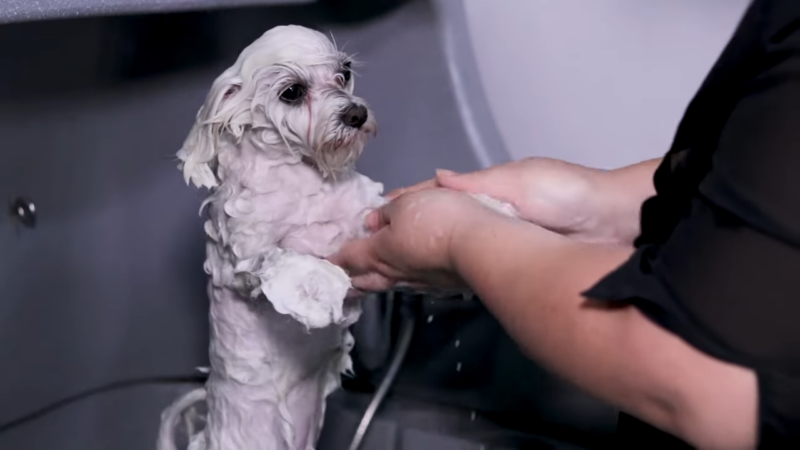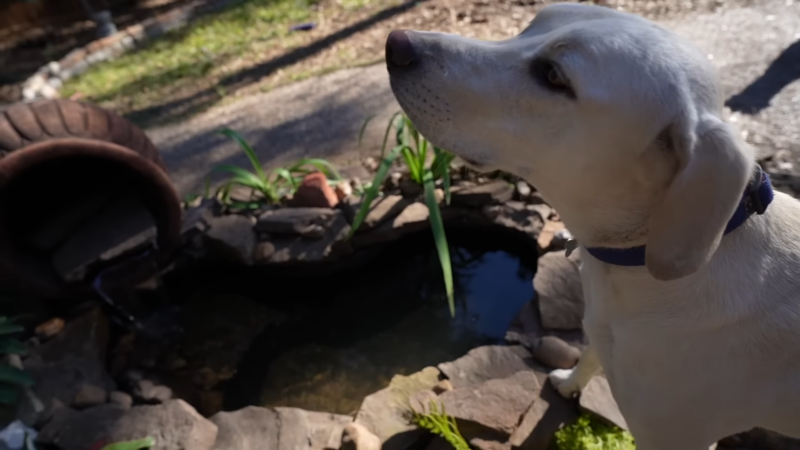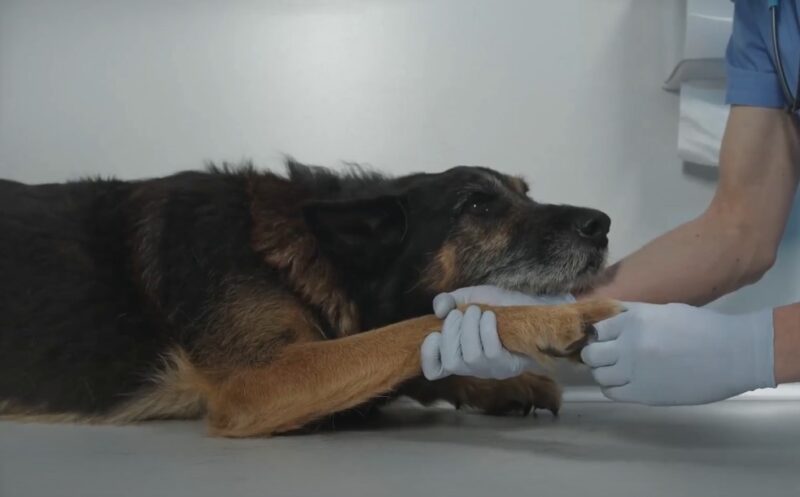
-
 Jane Harmon
Jane Harmon
- Published:
- Updated: August 26, 2024
- Category: Dog Specific Care
Share Post:
As a dog owner, I know how important it is to keep our furry friends healthy and happy. But sometimes, health issues sneak up on us, and hyperkeratosis is one of those conditions that can go unnoticed until it starts causing real discomfort for our pets.
Hyperkeratosis is a skin condition that leads to the thickening of the outer layer of the skin, mainly affecting the nose and paw pads of dogs. If left untreated, it can cause significant pain and lead to secondary infections.
So, let’s walk through some of the key signs that might indicate your dog is dealing with hyperkeratosis.
1. Thickened and Hardened Skin
When I first heard about hyperkeratosis, I didn’t realize how serious it could get. But once you know what to look for, the signs can be pretty clear.
One of the earliest and most noticeable indicators is the thickening and hardening of the skin on your dog’s nose or paw pads.
Melissa Boldan, DVM, highlights that the overproduction of keratin manifests as thickened, dry calluses on the dog’s paw pads. If left untreated, this condition could lead to pain, discomfort, and even secondary infections, making early detection and treatment crucial.
Nasal Hyperkeratosis
Have you ever noticed your dog’s nose looking a bit crusty or dry? This could be more than just dehydration. The nose may become rough, cracked, and layered with crusty deposits.
This not only affects your dog’s sense of smell but can also cause discomfort, especially when they eat or drink.
Paw Pad Hyperkeratosis
The paw pads are another common area where hyperkeratosis strikes. The skin here can get unusually thick and hard, often forming layers of crusty skin that make walking painful.
You might notice your dog limping or being reluctant to go for a walk—two big signs that something isn’t right.
2. Cracking and Fissures
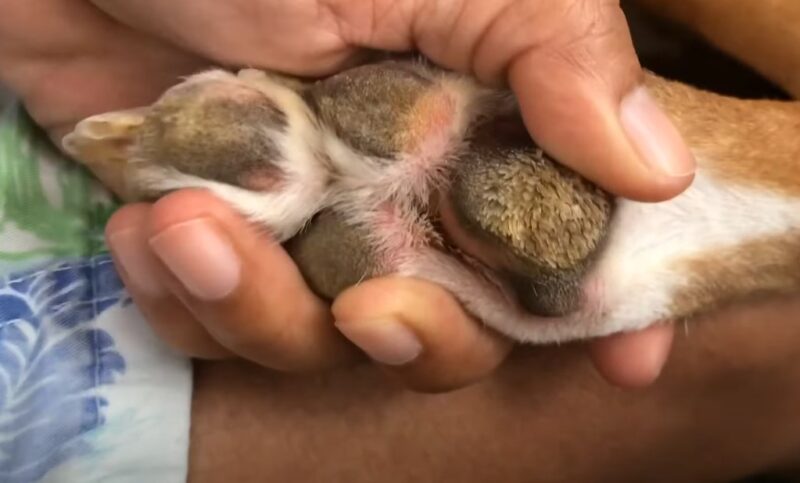
As the condition progresses, the thickened skin can start to crack. These cracks, or fissures, aren’t just unsightly—they can be incredibly painful for your dog.
- Pain and Discomfort: If your dog starts licking or chewing at their paws more than usual, or if they’re limping, it might be due to the pain from these cracks. The skin loses its elasticity, making it more prone to breaking.
- Risk of Infection: These open cracks are like a welcome mat for bacteria. If bacteria get in, it can lead to secondary infections, which can complicate the condition even further. At this stage, prompt veterinary attention is crucial.
A case discussed on the TPLO Info site outlines that symptoms of hyperkeratosis include dry, crusty skin, which can develop cracks and fissures. These fissures are not just unsightly but can cause pain and sensitivity in the affected areas. Similarly, Dermoscent highlights that the local inflammation and cracking associated with hyperkeratosis can be painful for dogs, often leading to limping due to discomfort.
3. Bleeding and Ulceration
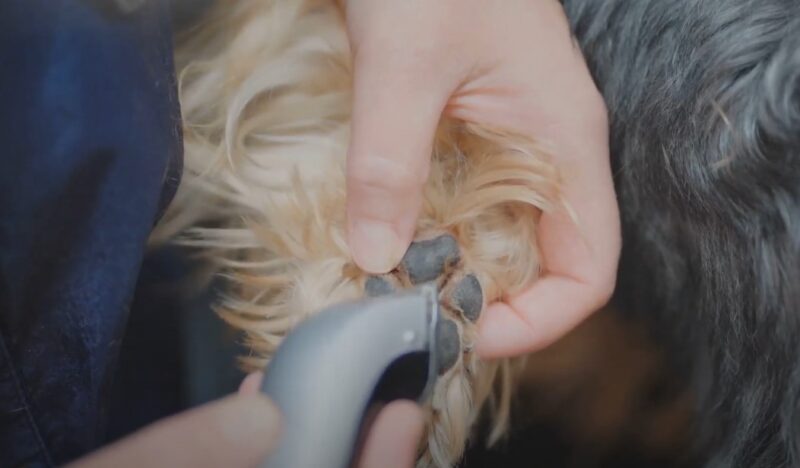
In severe cases of hyperkeratosis, particularly when it affects areas of high pressure like the feet, the thickened skin can develop deep fissures or cracks. These cracks can extend through the dermis, leading to bleeding and creating a potential entry point for infections.
When the skin barrier is compromised to this extent, the risk of ulceration increases, and such complications require immediate medical attention to prevent further deterioration.
A clinical case study published in the Journal of the American Academy of Dermatology highlights this progression. The study documented instances where patients with untreated or poorly managed hyperkeratosis developed deep, painful fissures.
These fissures led to secondary infections and, in some cases, resulted in ulceration, necessitating aggressive treatment to avoid more severe outcomes like cellulitis or osteomyelitis.
4. Lameness and Altered Gait
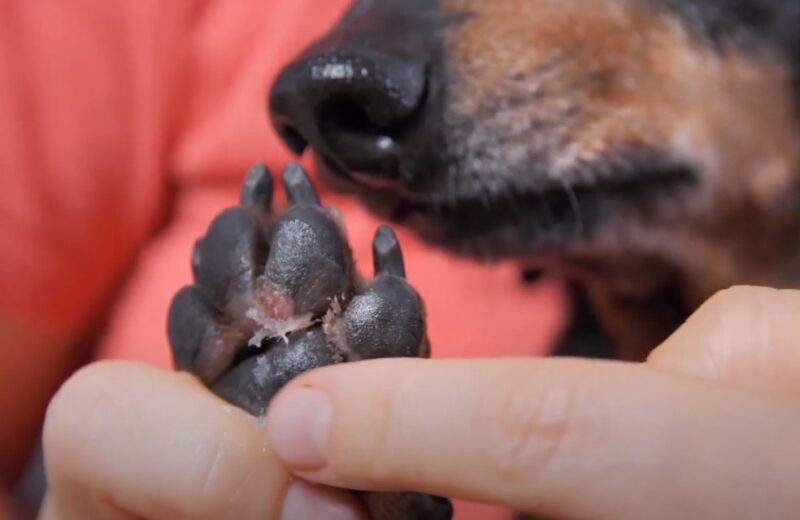
One of the most heartbreaking aspects of hyperkeratosis is how it affects your dog’s mobility. As the condition worsens, you might notice your dog walking differently or favoring one leg over another.
- Limping: Limping is a clear sign that your dog is in pain. They may avoid putting pressure on certain paws, leading to an uneven gait.
- Reduced Activity: If your once-active dog suddenly doesn’t want to go for walks or play like they used to, it could be due to the discomfort caused by hyperkeratosis.
- Altered Posture: To avoid pain, dogs might adopt unusual postures or ways of standing and moving, which can put additional strain on their muscles and joints, leading to more problems down the line.
Greenfield Puppies notes that limping and other mobility issues are a few signs your dog is in pain from hyperkeratosis. Additionally, a study highlighted by the Natural Dog Company discusses how footpad hyperkeratosis can cause significant mobility challenges in dogs, emphasizing the importance of early detection and treatment to prevent such issues.
5. Excessive Licking and Chewing
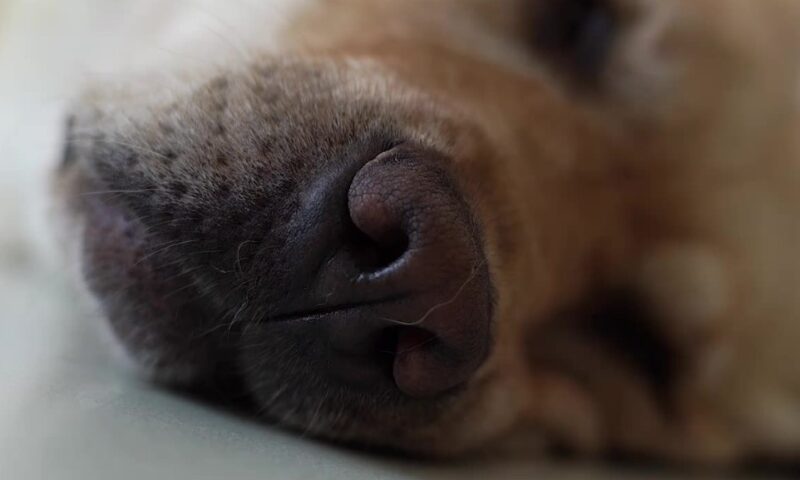
Dogs can’t tell us when they’re in pain, so they show us through their behavior. If your dog is obsessively licking or chewing at their paws or nose, it’s likely because they’re trying to relieve the discomfort caused by hyperkeratosis.
Dutch highlights that dogs with hyperkeratosis may frequently lick their paws due to the sensitivity and discomfort the condition causes. These behavioral signs are crucial indicators of pain or irritation in dogs, especially since they cannot express these feelings through words.
Self-Trauma
Unfortunately, this self-soothing behavior can make things worse. Licking and chewing can further damage the skin, increasing the risk of infections and making the cracks deeper.
Behavioral Changes
If your dog’s licking and chewing become excessive, it’s a sign that they’re in significant discomfort. It’s worth giving them a thorough check to see if hyperkeratosis might be the culprit.
6. Dryness and Loss of Pigmentation

Hyperkeratosis doesn’t just make the skin thicker; it can also lead to other changes in the appearance of your dog’s skin.
- Dry and Flaky Skin: The affected areas, especially the nose and paw pads, can become extremely dry. You might notice flaky or peeling skin, which can be uncomfortable for your dog.
- Pigmentation Changes: Sometimes, the skin might change color, becoming lighter or darker in patches. These changes are usually more noticeable in dogs with darker skin tones and can indicate ongoing skin damage.
According to TPLO Info, dogs with hyperkeratosis often develop a dry, crusty layer of skin, which can lead to cracks and fissures that may even bleed, demonstrating the skin’s compromised condition due to this disorder.
Wrapping Up
Keeping an eye on your dog’s nose and paws is more important than you might think. Hyperkeratosis can start as a minor issue but can quickly become a serious problem if left unchecked.
If you notice any of these signs in your dog, it’s time to pay a visit to the vet. Early detection and treatment can make all the difference, helping to manage the condition and keep your dog comfortable.
From topical treatments to possible dietary adjustments, there are several ways to address hyperkeratosis, but the first step is recognizing that something isn’t quite right.
Taking action early can help prevent further complications and ensure that your dog stays happy, healthy, and ready for the next adventure—whether that’s a walk around the block or a romp in the park.
Related Posts:
- Signs Your Pet Needs Immediate Veterinary Attention…
- Teddy Bear Hamsters - Everything You Need to Know…
- Panda Bear Hamsters - Everything You Need to Know…
- Why Does My Dog Have Black Gums? - Causes, Symptoms,…
- Springer Rage Syndrome in Dogs - 9 Signs of an…
- Potcake Dog Rescues - 7 Signs a Potcake is Right for You


